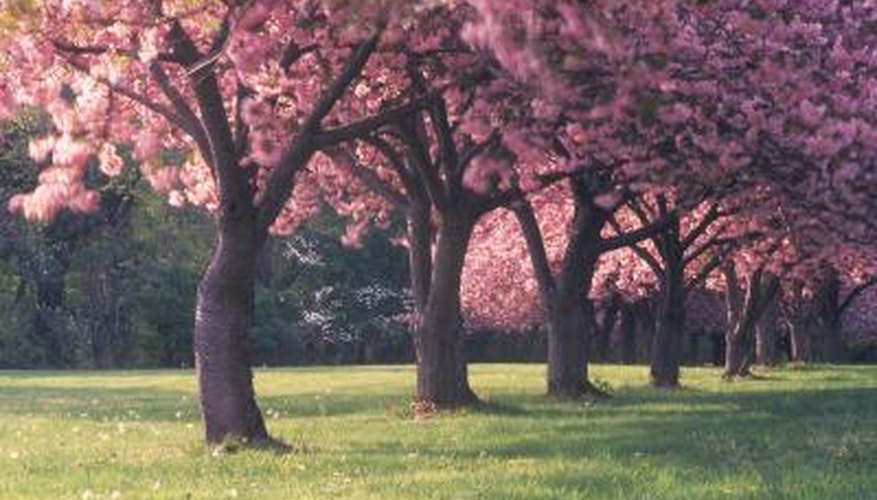Apple trees may leaf out each year at slightly different times, depending on weather conditions, so if yours is not turning green when you expect it to, it's possible that the tree is just late due to cold temperatures. A tree that is producing flowers but hasn't leafed out yet is probably fine. If, on the other hand, early summer has arrived and the tree has produced no leaves or flowers, it's time to do some detective work.
Diseases
Apple trees are subject to several diseases, but the most serious ones are Phytophthora Crown, collar rot and root rot. These diseases can cause reduced vigour, leaves that turn yellow or drop early in the season, and reduced fruit yield. There is no cure, and the tree eventually dies. Young trees and trees already under stress are most vulnerable and may die in the first season after contracting the disease. Peel a small piece of bark away from the crown, or base, of the tree. Crown rot causes the underlying tissue to turn brown, orange or black. The disease is exacerbated by poor drainage conditions. Do not replant apple trees in this site because the diseases can live in the soil for many years.
- Apple trees are subject to several diseases, but the most serious ones are Phytophthora Crown, collar rot and root rot.
- These diseases can cause reduced vigour, leaves that turn yellow or drop early in the season, and reduced fruit yield.
Insects
Severe insect infestations can girdle branches, resulting in dead branches the following year. Look for signs of infestations, such as small holes in the wood and sawdust at the base of the tree. If you suspect insects are to blame, consult a county extension office to identify the pest and offer solutions. The fact that the tree has no leaves is not a good sign.
- Severe insect infestations can girdle branches, resulting in dead branches the following year.
- Look for signs of infestations, such as small holes in the wood and sawdust at the base of the tree.
Environmental Conditions
Environmental conditions, excessive drought, lawnmower injury, injury from deer and rabbits, or changes in the soil grade due to construction excavation can cause slow decline in trees that results in branch dieback, reduced vigour and few leaves. Young apple trees are vulnerable to sun scald in the winter, which causes peeling bark and cracks in the tree, leaving the tree more vulnerable to insect and disease problems. If the bark is completely removed from a section of the tree, the tree is said to be "girdled," and anything above that point dies.
Recommendations
A tree with no leaves is most likely dead and requires removal. Look for other symptoms first, though, such as injury to the trunk and bark, cankers and fungal spores. Plant new apple trees in full sun, in a location with well-drained soil. Prune the tree annually to remove dead limbs and open the interior of the tree up to light.
- A tree with no leaves is most likely dead and requires removal.
- Look for other symptoms first, though, such as injury to the trunk and bark, cankers and fungal spores.
